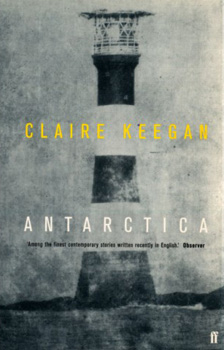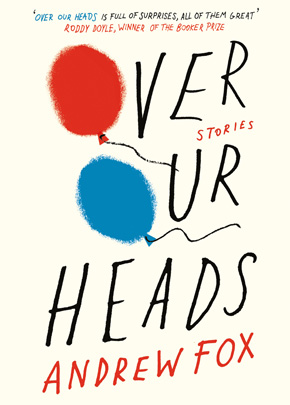Claire Keegan: ‘Men and Women’
by Andrew Fox I listened recently to an interview with Teju Cole on the subject of the author and photographer’s favourite film, Kieslowski’s Red, which starts off with a rumination on the nature – and, especially, on the timing – of favourite things in general. “The impression I have,” Cole says, “is that there’s a certain timing that is right for your favourite movie to arrive in your life. It has to be at this time… when you are young, but not too young, when you’re impressionable in a particular way, and when you’re seeking the kind of meaning that a favourite book or a favourite movie or a favourite song can give to you. And college is a great time for that. The music you like in college is the music that you’re going to end up flinging at the kids and saying, ‘In my day…’ And when you’re referring to your day, you’re usually referring to your late teens and early twenties.’”
I listened recently to an interview with Teju Cole on the subject of the author and photographer’s favourite film, Kieslowski’s Red, which starts off with a rumination on the nature – and, especially, on the timing – of favourite things in general. “The impression I have,” Cole says, “is that there’s a certain timing that is right for your favourite movie to arrive in your life. It has to be at this time… when you are young, but not too young, when you’re impressionable in a particular way, and when you’re seeking the kind of meaning that a favourite book or a favourite movie or a favourite song can give to you. And college is a great time for that. The music you like in college is the music that you’re going to end up flinging at the kids and saying, ‘In my day…’ And when you’re referring to your day, you’re usually referring to your late teens and early twenties.’”
In my day, which is to say my college days, I read widely but conservatively. The various English syllabi assigned to me began with the Anglo-Saxon Chronicle and moved on through Chaucer, Shakespeare, Milton, before petering out somewhere around Late Modernism. It was a thorough grounding, an excellent education, albeit one weighted towards the British Isles and the 19th century. Curious by its absence, though, was the contemporary short story, so when I decided some time during my final year to try and write stories of my own, it was towards a second reading list that I began to turn.
This, along with most of the other favourite-worthy items of culture I encountered in college (Scorsese’s The Last Waltz, say, or Lou Reed’s Transformer), was supplied by my friend Ryan, perhaps the hippest individual I had ever had the good fortune to meet (another crucial element of favourite things: the person who first brought them to your attention). Ryan, within the space of what memory insists was about a week or so, introduced me to Junot Diaz and Dennis Johnson and Claire Keegan, between whose Drown and Jesus’ Son and Antarctica my idea of the form triangulated and solidified into the shape in which it more or less persists today.
I could nominate almost any one of the thirty-six stories that comprise those three collections as a favourite, but if pushed I’d have to opt for Keegan’s ‘Men and Women’, the dense and juddering mini-saga of a bullied woman’s emergence from the tyranny of a loutish husband, as witnessed by a whip-smart daughter who herself is dominated in the family’s hierarchy by a layabout son with scholarly pretensions. It’s a real gripper, furious and astute. You know in your bones that Keegan knows in hers this rural Irish world, as Anne Enright described it in her review of Keegan’s second collection, Walk the Blue Fields, “of silent men and wild women who, for the most part, make bad marriages and vivid, uncomprehending children.”
Keegan’s characters are defined utterly by their relationship to the land and by the spectre of prior generations who have worked it. The stories of Antarctica are what I think of when I think of the word ‘timeless’.”
Keegan’s world, to me, was one both recognisable and strange. I grew up and attended college in Ireland, but my childhood was suburban, reasonably forward-looking in a boring sort of way and pretty much devoid of connection to place or past, whereas Keegan’s characters are defined utterly by their relationship to the land and by the spectre of prior generations who have worked it. The stories of Antarctica (1999) are what I think of when I think of the word ‘timeless’. Aside from the odd mention of a television or a phone, of the EEC or the serial killer Fred West, their characters’ frustrations and hopes and jealousies and loves could play out against the backdrop of pretty much any year of the 20th or even the 19th century.
And it’s Keegan’s handling of time in ‘Men and Women’ that makes the story a technical masterpiece. Sure, it’s perfectly plotted around a reversal of power reliant on the symbol of the father’s car, of which at the story’s poignant close the mother seizes the wheel; but what keeps me re-reading it – and I’ve read it on average once a month for the past nine years or so – is the fact that it’s about the best, most nuanced use of tense that I have ever come across. If plot is character in action, then story is perspective in time, and although I understand the value of, and (in novel-writing, anyway) aspire to the Apollonian third-person past, for me the perfect short story is first-person present, a mode of focalisation that is truly immediate and the nearest thing in narrative to the marrow of experience.
Good first-person-present stories, though, are relatively thin on the ground, for the reason, I think, that the mode places two enormous demands on the writer: 1) to keep the now both vital and meaningful, and 2) to locate the present action somehow in the wider time and space of the narrator’s experience, without resorting to the abrupt key change of flashback. In ‘Men and Women’, Keegan doesn’t just rise to these demands, but exceeds them thanks both to a mastery of the child’s apparatus of perception and to a subtle mediation between present-simple and present-continuous, the story tracing an arc of perspective and tense that works in tandem with that of plot. It begins in the habitual, the perpetual now of childhood:
“My father takes me places. He has artificial hips, so he needs me to open gates. To reach our house you must drive up a long lane through a wood, open two sets of gates and close them behind you so the sheep won’t escape to the road. I’m handy… I am the girl of a thousand uses.”
Before being jolted, by a gathering awareness of crisis, into a more direct reckoning with the present day:
“There is something sad about Mammy tonight; it is all around her like when a cow dies and the truck comes to take it away. Something I don’t fully understand is happening, as if a black cloud has drifted in and could burst and cause havoc.”
And ends with the decisive moment when the door to an uncertain future is flung open and the one on the past slammed shut:
“She slides over into my father’s seat, the driver’s seat… She drives us through the snow-covered woods. I can smell the pines. When I look back, my father is standing there watching our tail-lights. The snow is falling on him, on his bare head, on the hat that he is holding in his hands.”
I was awe-struck, when first I read the story, by what seemed – and what still seems – its perfect union of subject matter and technique. Some years later, in graduate school in the United States, I would read another interview with another writer I had come to admire, Truman Capote, who said of the short story that its handling of the world it describes must be made to seem absolute and final: “As an orange is final. As an orange is something nature has made just right.” I thought immediately of ‘Men and Women’. The story is, precisely, “made just right”; it came into my life at just the right time, and I’ll be flinging it at my kids, my friends, or whomever else I find within flinging-distance, for a very long time to come.
 Andrew Fox was born in Dublin in 1985. His stories have featured in journals including the Dublin Review and the Stinging Fly. He lives in New York. His first collection of stories, Over Our Heads is published by Penguin in paperback and eBook. Read more.
Andrew Fox was born in Dublin in 1985. His stories have featured in journals including the Dublin Review and the Stinging Fly. He lives in New York. His first collection of stories, Over Our Heads is published by Penguin in paperback and eBook. Read more.
Read the story ‘A man should be able to do things’ from Over Our Heads.
Claire Keegan’s Antarctica is published by Faber & Faber.

